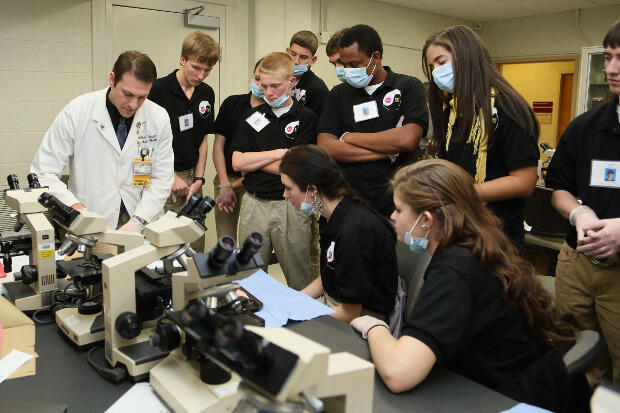
July 21, 2017
Taking action: When it comes to supporting community partnerships, VCU puts its money where its mouth is
Share this story
Note: This article originally appeared in the summer 2017 VCU Alumni magazine. Active, dues-paying members of VCU Alumni receive a subscription to the magazine as a benefit of membership. To read the whole magazine online, join today! For more information, visit vcualumni.org.
For a university that received $271 million in sponsored research in 2016, a $20,000 grant might not seem like much. But sometimes, as Catherine Howard, Ph.D., vice provost for the Division of Community Engagement at Virginia Commonwealth University, suggests, $20,000 can provide an all-important first step.
And she should know.
Since the community engagement division was founded a decade ago, Howard has had a hand in doling out nearly 70 such grants through the university’s Council for Community Engagement, and each project funded, she says, bears the hallmark of VCU’s approach to working with the community.
“Community engagement is really in our DNA,” she says. VCU’s predecessors, the Medical College of Virginia and Richmond Professional Institute, “were born of the critical issues of the day and were structured to meet them. But they also acknowledged that there’s a tremendous amount of expertise the community possesses that needs to be brought into the discussion around those issues.”
That honest and genuine dialogue between university and community, Howard says, is what helps differentiate engagement from service, spurring efforts that are mutually beneficial.
“That’s really the key to community engagement,” Howard says. “The community must get something out of it, and the university should get something out of it, the generation of new knowledge should be enhanced. You can volunteer at a food drive, for example — and service and outreach like that is definitely important — but are you also taking the time to understand and combat things like food insecurity? That’s the deeper level of engagement we’re after.”
Of course, it’s one thing to say as a university that you want your faculty and students to engage with the place they call home and quite another to put your money where your mouth is. But that’s exactly what VCU has done with its community engagement grants, and though Howard admits the funds might seem like a drop in the bucket, the purpose is never about making a splash. Rather, the grant program is about signaling, both internally and externally, that VCU takes community engagement just as seriously today as its predecessors did a century ago, and that by adding even a modest incentive, VCU could spark dialog with community partners and jump-start long-simmering ideas by giving them just enough muscle and backbone to grow and stand on their own.
In addition to the three projects highlighted below, many projects that received initial funding from a community engagement grant have similarly sustained themselves through incorporation into existing VCU programs and departments, or with support from various external funding sources.
Opening up a health careers pipeline
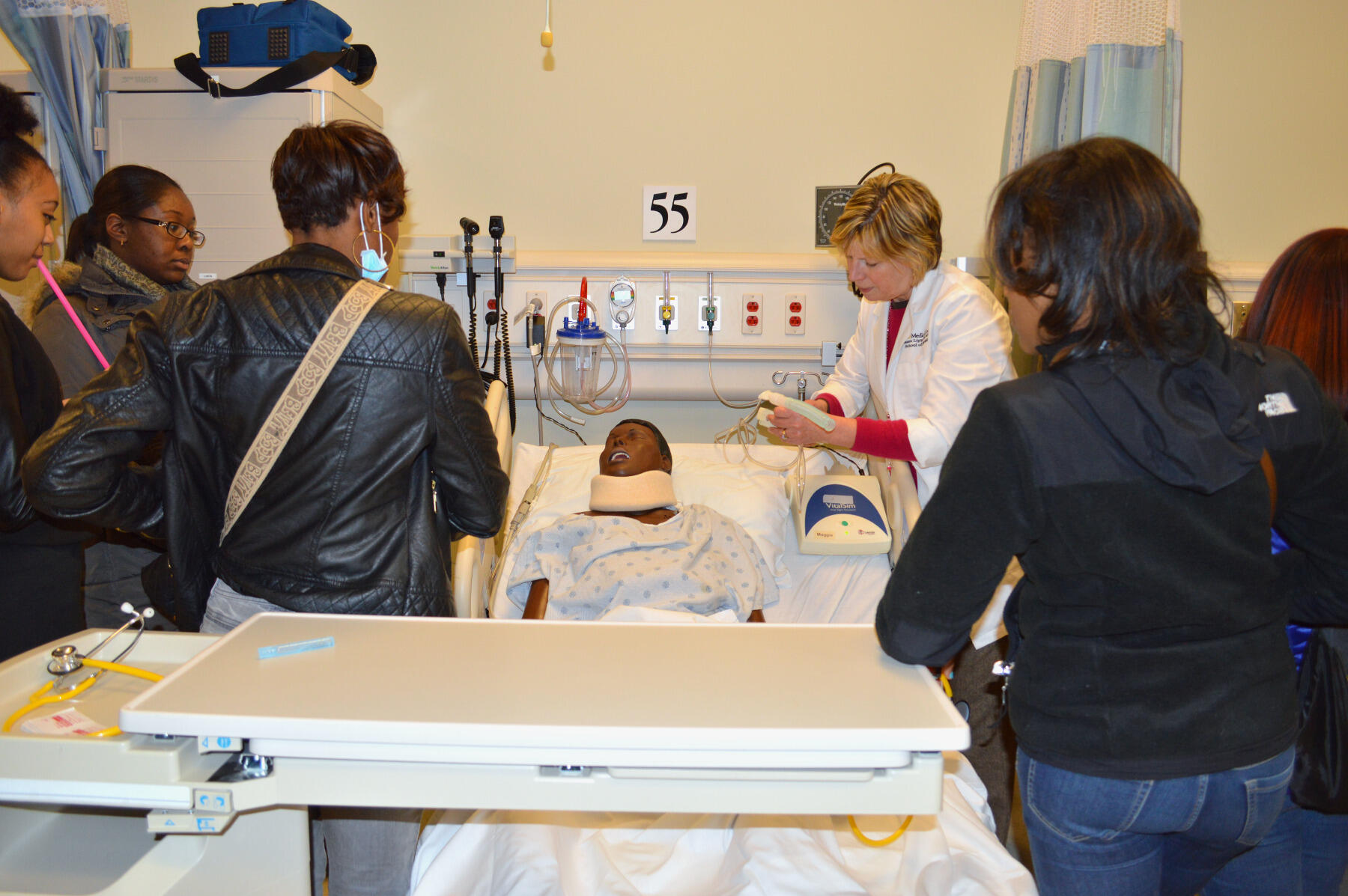
Photo by Seth Leibowitz.
As executive director of health sciences programs and advising in the Department of Kinesiology and Health Sciences in the College of Humanities and Sciences, Seth Leibowitz, Ed.D., says he has counseled incoming freshmen who were not well prepared to make informed decisions about entering health care careers.
“I found myself spending a lot of time helping first-year college students choose which profession to go into and performing career assessments to determine if health sciences was the right field for them when, really, they needed to be focused on excelling in their prerequisite science courses,” Leibowitz recalls.
In 2004, he created a health careers exploration class for incoming first-year students interested in the health sciences, exposing students to different career options to help them find the right fit. In the back of his mind, though, he thought VCU needed to be reaching these students before they entered college. Then, with the 2007 opening of the Health Sciences Specialty Center at Cosby High School in Chesterfield, Virginia, Leibowitz found the perfect population of students to work with. Cosby became a community partner to join the application process, a requirement of the community engagement grant program, and that same year, the Health Sciences Academy was launched with a $20,000 community engagement award. The program’s early successes led to funding support from federal grants and foundations such as the Jesse Ball duPont Fund and to its incorporation into the Division of Health Sciences Diversity in VCU’s Office of the Vice President for Health Sciences. The office provides fiscal, administrative, personnel and programming support to the HSA and more than 20 similar programs aimed at getting students into the health care professions pipeline.
|
“As a small specialty high school in Richmond Public Schools with limited resources, the Health Sciences Academy gives us an opportunity to expose our students to health care careers and connect them with mentors to gain firsthand information about college life, all of which grooms them for post-secondary success." – James Brown, principal, Richmond Community High School |
Modeled on the college class Leibowitz constructed in 2004, HSA, which has since branched out to work with students at John Marshall and Richmond Community high schools in the city of Richmond, asks high school students to think and work like college students, while earning college credit.
Along with lectures and coursework, students in the HSA come to VCU throughout the semester for laboratory work where they might carve teeth from wax in the School of Dentistry one week, perform CPR on simulated patients in the School of Nursing the next and learn how to suture a pig’s foot in the School of Medicine the week after. Dozens of other hands-on and shadowing experiences are offered through the schools of Allied Health Professions and Pharmacy and VCU Health. The high-schoolers are paired with a VCU student mentor enrolled in upper-level psychology service-learning courses, someone to help guide them through the rigors of a college class, navigate the collegiate admissions process, effectively manage their time and develop effective written and oral communications skills.
“When I was a student in the program, having that mentor was so important to me, because they shared their stories and I was able to see myself in them,” says Andacia Rhyne, a Cosby graduate who is now a sophomore sociology major at VCU and serves as an HSA mentor. “I felt like, if they can do it, why can’t I?”
Those kinds of empowering experiences help to not only give students the confidence to make decisions about entering college, but they also help steer many to VCU as the place to pursue their goals. This, in turn, creates a pipeline for students to eventually serve their communities through the health professions.
“If we’re going to be a community-engaged partner, that means we need to work to change the face of health care in our communities, to train providers who reflect the communities and diversity of patients they’re serving,” says Lisa Webb, Ed.D. (M.S.’06/AHP; Cert.’06/AHP; Ed.D.’15/E), executive director for academic health sciences in the Office of the Vice President for Health Sciences.
After 10 years, 450 VCU students have served as mentors and 900 high school students have graduated from the program. Of those 900, 22 percent have chosen to attend VCU for undergraduate or graduate studies, many in the health sciences. Even if HSA students end up not pursuing a health care career, both Leibowitz and Webb say the program’s success is marked in equipping students with the tools and confidence to formulate and pursue their goals.
What can design do for you?
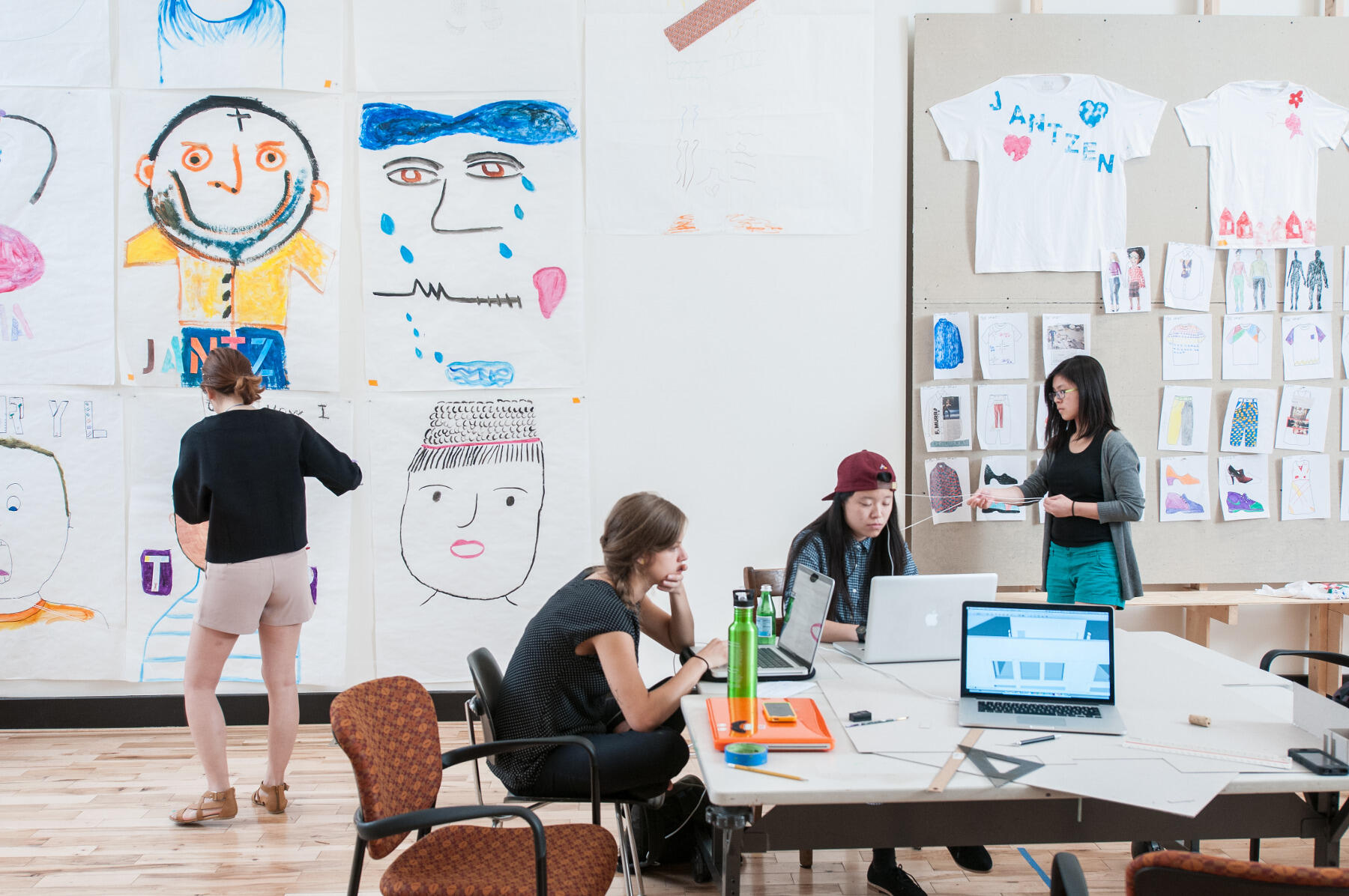
Photo by Terry Brown Photography.
“Whether you’re talking about landscape, architectural, fashion or graphic, design really helps set the stage for how a community looks and how it feels — to pedestrians, cyclists, residents, business owners, visitors and anyone who interacts with that place,” says Ryan Rinn (Cert.’11/GPA; M.U.R.P.’12/GPA), executive director of the Storefront for Community Design, a local nonprofit organization founded in 2011.
Storefront harnesses the skills of local design professionals to help area residents and organizations design and plan projects to improve Richmond’s communities. The early successes of Storefront’s efforts helped drive home the need for something similar on VCU’s end, says Kristin Caskey, associate professor of fashion design in the School of the Arts.
“We’d been having meetings for like seven years, saying we needed to do something design-centric in the city,” Caskey says. “We always felt like, we live in this community, but we’re not facing as outward as we could be, and design is such a local thing, so why aren’t we designing more things to help this community communicate its needs, its dreams?”
Caskey, along with colleagues Camden Whitehead, associate professor of interior design, and John Malinoski, associate professor of graphic design, established a multidisciplinary design studio service-learning course called Middle of Broad, or mOb, and wanted to get real community-inspired projects in front of those students.
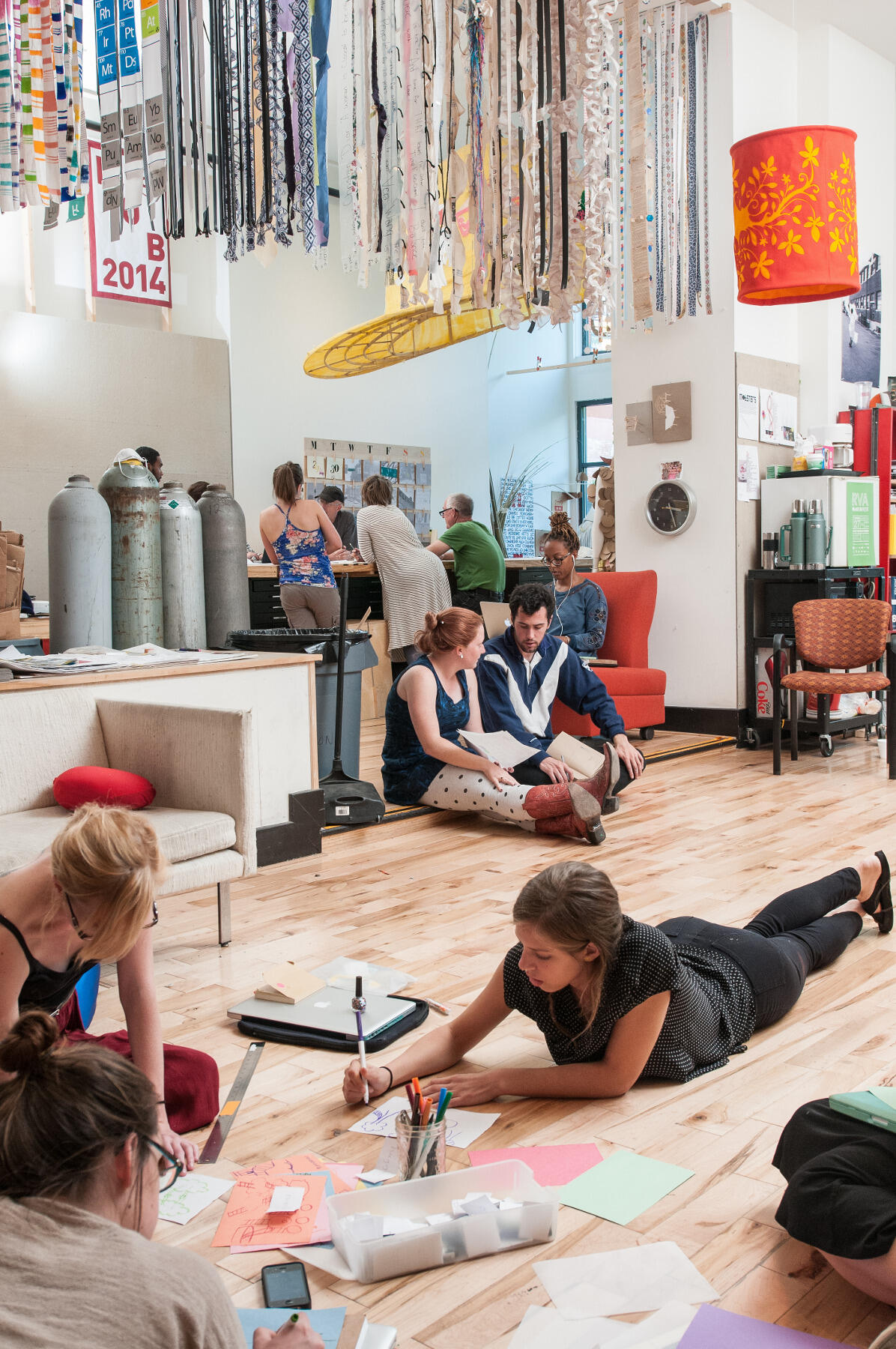
Photo by Terry Brown Photography.
“Our mission just really aligned [with Storefront’s], because here was a place where skilled designers were donating their time to members of the community, where they’d built up a lot of trust, but they could only give so much,” Caskey says of the decision to partner with Storefront. “This was a way we could give a semester’s worth of time to projects and bring students into relationships with community members and working professionals.”
In 2012, with $14,000 in community engagement grant funding, Caskey, Malinoski and Whitehead rented studio space downtown with Storefront as a co-tenant at 205-207 E. Broad St. between VCU’s two campuses and launched the mOb + Storefront studio.
Having that space is vital, Caskey says, as it helps get students out of the campus bubble and gets them thinking and acting as their own nonprofit-like entity. Similarly, because of their location on a well-traveled corridor of Broad Street that is being revitalized, that visibility helps lead to more community members walking through the doors to share their ideas about projects for which they’d like assistance.
Once these community members — individuals, other nonprofit organizations or businesses — bring their ideas to the table, mOb + Storefront then picks 10-12 projects a semester, assigning each a team of two to three students from different design disciplines. From there, the teams work under the guidance of a professional mentor to develop a brief and a set of design concepts, just as they would in a professional setting.
Projects can range from helping the owner of a local building revitalize a facade through architectural design, to working with organizations like the Richmond Behavioral Health Authority on billboard signage and communications materials, to helping partners like VCU Massey Cancer Center and the VCU School of Medicine’s Department of Psychiatry develop innovative interior designs to improve the clinical experience of patients seeking treatment.
|
“mOb was my first exposure to working with real clients — people not from academia but from within the community — and collaborating with other designers extensively. – Miranda Leung (B.F.A.’16/A) |
“The great thing about mOb + Storefront is that it’s an experimental design studio, so we’re asking students to bring their own flavor, to think outside the box, and the clients are aware when they’re selected that they’re going to get out-of-the-box thinking,” Rinn says. “These are real projects, real clients and real challenges they’re facing, so it’s a pretty literal real-world preparation for them.”
In the five years since the partnership began, mOb + Storefront has tapped into internal funding sources from the School of the Arts, as well as grants from the National Endowment for the Arts. That increased funding has allowed students to tackle 96 projects, and while not everything presented to a client ends up being produced or developed beyond the initial planning stage, that comes with the territory of being a professional designer. What’s important, Caskey notes, is that students gain the real-life experience of working in a design office and come to view themselves and their work through the lens of place.
“As designers, I think they come to see that they can enliven the city they live in, not just through great ideas,” Caskey says, “but by being generous in spirit.”
A model of community-based care
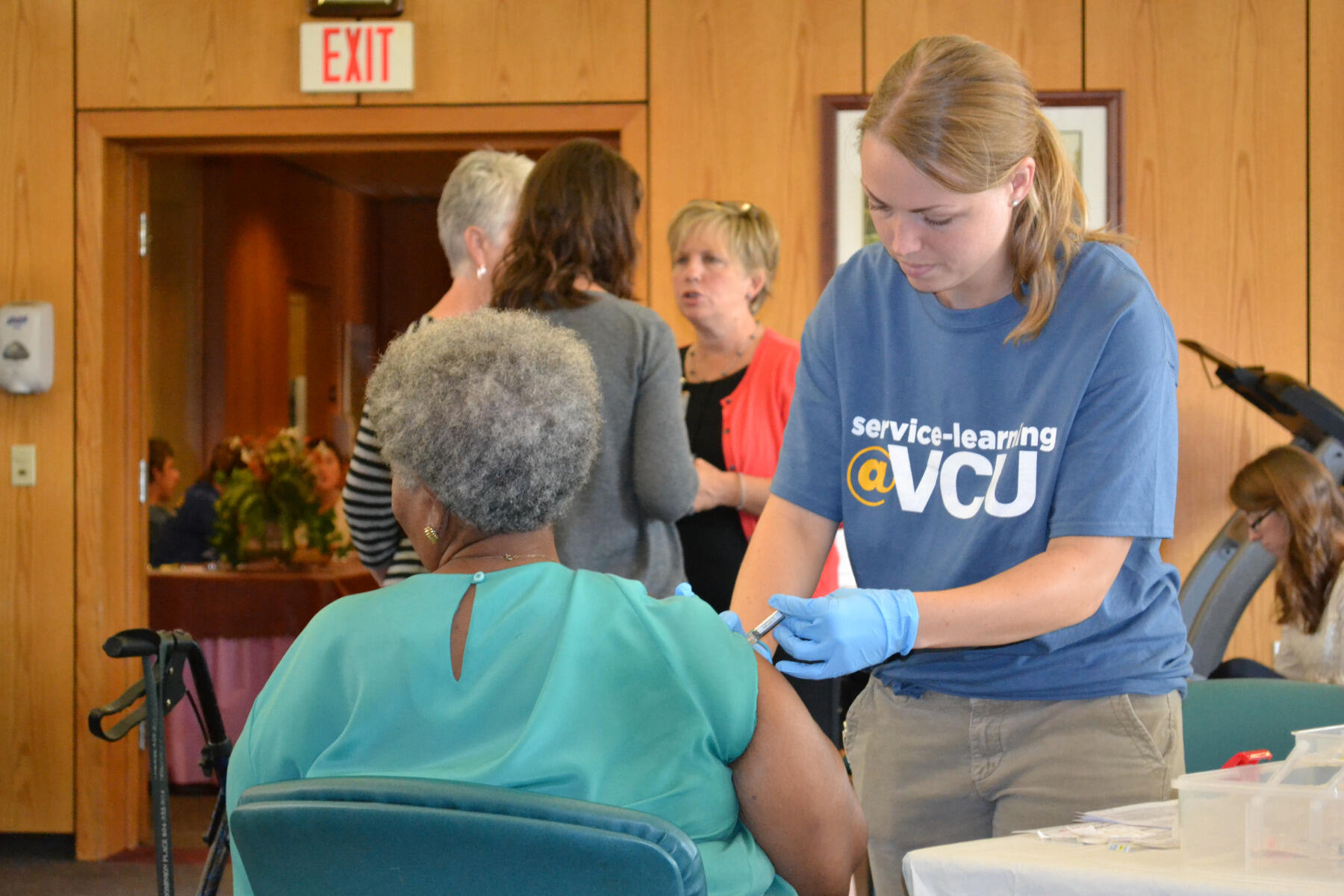
Photo courtesy of Richmond Health and Wellness Program.
As a nurse practitioner working mainly with the aging population, Pam Parsons, Ph.D., RN (M.S.’84/N; Ph.D.’04/N), clinical associate professor and director for practice and community engagement in the School of Nursing’s Department of Family and Community Health Nursing, realized that meeting the needs she was witnessing in her patients, especially in those living in senior housing in the Richmond area, would require not only greater collaboration among practitioners but also the ability to bring care to people where they live.
Parsons, along with a colleague from the School of Pharmacy, reached out to the management of Dominion Place, an independently owned apartment complex housing about 250 lower-income residents older than 62 on West Grace Street, on the doorstep of VCU’s Monroe Park Campus.
“We held a town hall meeting with the residents, with management, and asked them to identify their needs and the kinds of services they’d like to have,” Parsons recalls. “The needs they identified were very much aligned with what I’d observed: management of chronic diseases like high blood pressure and diabetes, mental health services, assistance with medication and better access to care and care coordination between primary and specialty providers — none of which are single-discipline problems.”
With her community partner on board willing to set aside space on the Dominion Place grounds for a startup clinic, Parsons used the $20,000 in community engagement grant money to purchase necessary supplies like blood pressure cuffs, stethoscopes and glucometers to get the Richmond Health and Wellness Program up and running in 2012. In addition to supplies, the grant also helped cover the cost of a coordinator who could help engage with residents at Dominion Place and manage appointments at the free clinic, which weren’t meant to replace residents’ primary care services but to augment those services and help residents better navigate the health care field.

Photo by Allen Jones, VCU University Marketing.
During visits, a resident who chooses to come to the clinic meets with a team of two to three students, overseen by faculty members from the schools of Medicine, Nursing, Pharmacy and Social Work, as well as the Department of Occupational Therapy in the School of Allied Health Professions and the departments of Psychology and Kinesiology and Health Sciences in the College of Humanities and Sciences. The team completes a comprehensive geriatric assessment, including blood pressure and glucose monitoring, helps the resident identify wellness goals and coordinate any doctor or hospital visits needed through scheduling, arranging for transportation and assisting with insurance questions.
Time is key to the whole process, says Caroline Hartmann (B.S.’13/N; M.S.’17/N), a former student in the family nurse practitioner program in the School of Nursing, who worked at RHWP during the fall 2016 semester.
“Each shift was about eight hours, and we would see anywhere from three to six patients a day, so the patients had plenty of time to discuss their concerns,” Hartmann recalls. “And since each student had a different background, we all were able to bring something different to the table and really work together to identify any barriers to health and come up with a plan to improve the patient’s overall well-being.”
That kind of collaborative experience should lead to a better prepared workforce moving forward, Parsons says.
|
“This program should have been here a long time ago. I’ve been coming to the clinic since it came in, and it’s just wonderful. I really put them up on a pedestal because they’ve just done so much to help me better my life. They’ve saved my life.” – Helen Jones, 72, Dominion Place resident |
“That’s where we need to go to meet the needs of this population, which is only growing,” Parsons says. “By giving our students the opportunity to understand roles from other disciplines and engage differently as they develop care plans, they can see firsthand how different professions can and should work together at the same time.”
With the immediate success of the partnership with Dominion Place, Parsons and her team tapped into a larger vein of funding from the U.S. Department of Health and Human Services to expand the program into two additional residences the second year by partnering with the Better Housing Coalition, and two more the year after that through a partnership with the Richmond Redevelopment and Housing Authority.
Since the program started, 803 students have participated, helping 400 patients through 4,663 clinic visits, which is major progress in five years with $20,000. Parsons says she’d like to see the program expand into more residences and to provide more activities to promote wellness. But for Parsons, the community engagement grant was less about the money and more about the buy-in from the university.
“Having that grant showed institutional support, which is invaluable, and we were able to leverage that when opportunities for more funding became available,” Parsons says.
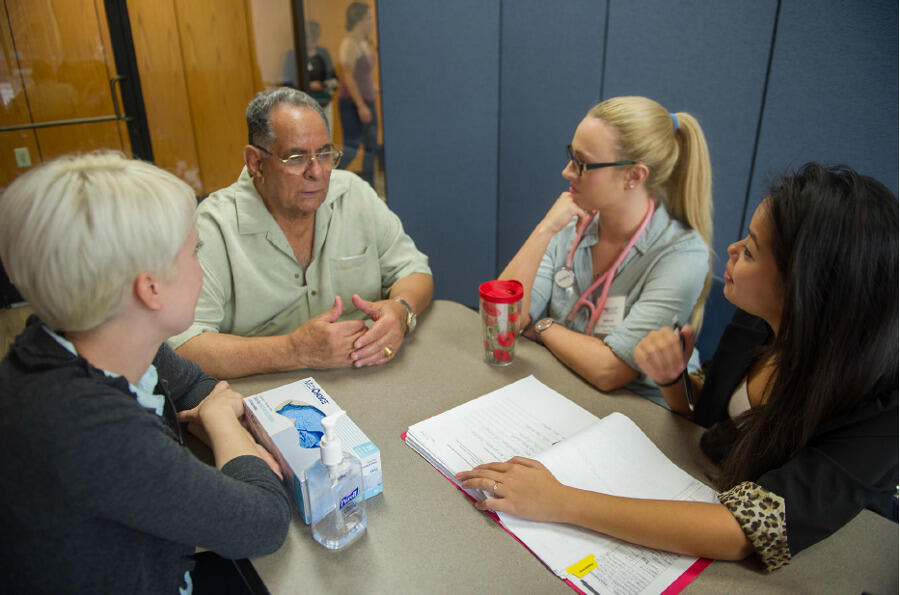
Photo by Allen Jones, VCU University Marketing.
That’s a refrain echoed by Caskey, Leibowitz and Howard.
“Sustainability can be tough to achieve,” Howard admits. “But I think in a lot of instances, these grants help legitimize the visions of these faculty members and their community partners. It gives them an opportunity to see where that vision might take them, and sometimes you just never know where something might go.”
– Andy Bates is a contributing writer for the alumni magazine.
By the numbers |
|
Since its inception in 2007, the Council for Community Engagement has awarded more than $1 million to 69 projects. In turn, these projects have: -Leveraged more than $2.3 million in external funding — a roughly $3 return on investment per dollar granted* -Provided opportunities for community-engaged scholarship, teaching and service to 1,350 students and 219 faculty members** -Served as catalysts for 199 community-engaged scholarly products, including journal publications and symposium presentations |
|
*Grants awarded during the 2016-17 cycle are not included in calculation of return on investment. Similarly, some funds from the 2015-16 cycle are under review or pending delivery from external sources and, as such, have not been factored into the total. **These numbers reflect student and faculty engagement only during the year in which a project was funded by a community engagement grant and do not reflect subsequent student and faculty involvement once the grant has expired. |
Subscribe to VCU News
Subscribe to VCU News at newsletter.vcu.edu and receive a selection of stories, videos, photos, news clips and event listings in your inbox.






